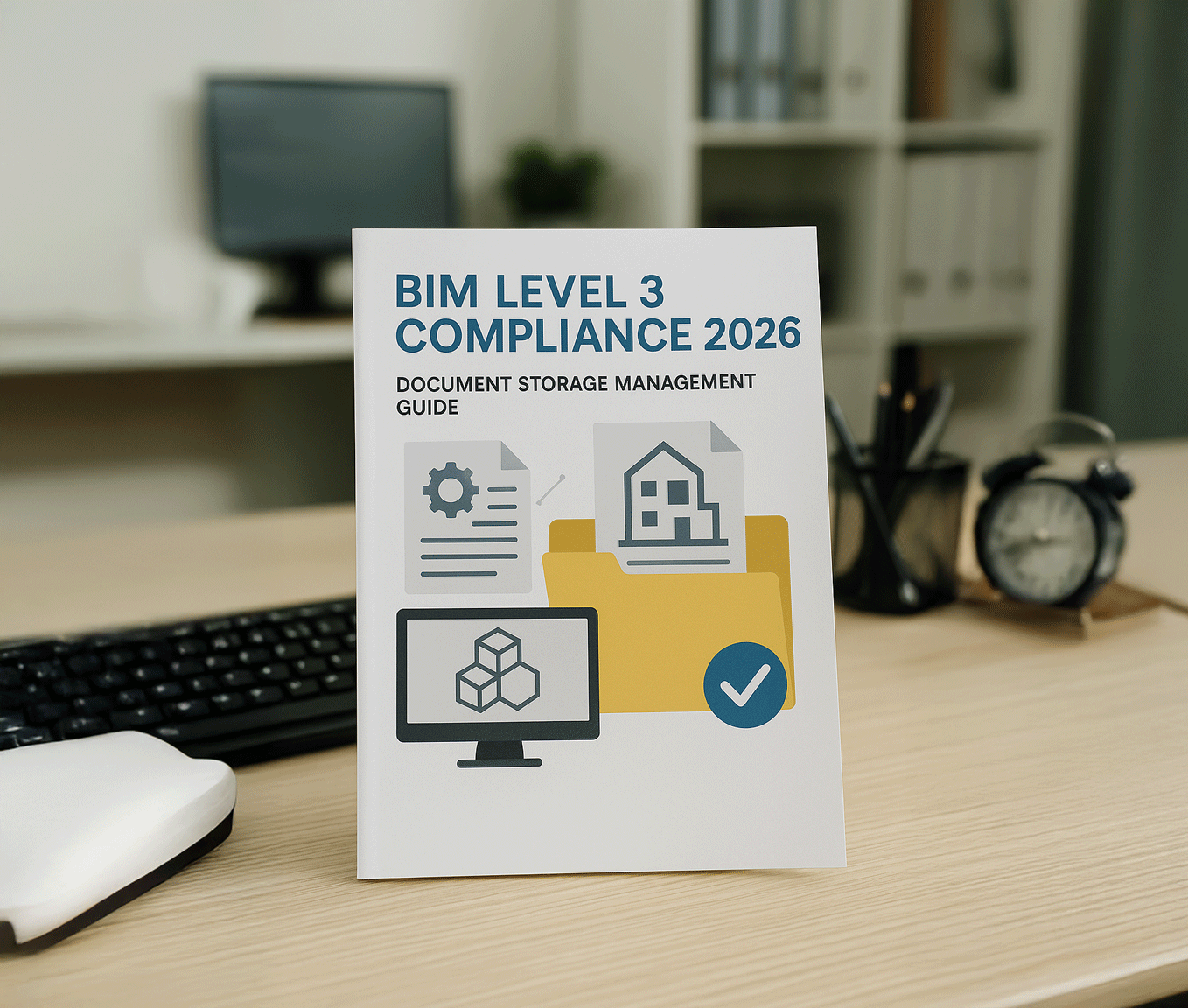Why Document Storage Management Is Critical for BIM Level 3 Compliance
Master BIM object document storage for UK Level 3 compliance by 2026. Essential strategies, systems, and workflows
BIM Level 3 Compliance 2026: Document Storage Management Guide
Meta Description: Master BIM object document storage for UK Level 3 compliance by 2026. Essential strategies, systems, and workflows for construction teams.
As the UK construction industry prepares for BIM Level 3 implementation in 2026, the spotlight has turned to one of the most fundamental yet overlooked aspects of Building Information Modelling: document storage management. Whilst much attention focuses on sophisticated modelling software and collaborative platforms, the backbone of successful BIM Level 3 compliance lies in how effectively organisations manage their libraries of BIM objects and associated documentation.
Understanding BIM Level 3 Requirements
BIM Level 3 represents a fully integrated approach where all project stakeholders work within a shared digital space, utilising consistent data standards and protocols. Unlike previous BIM levels, Level 3 demands seamless interoperability between different software platforms, disciplines, and project phases. This integration is impossible without robust document storage management systems that ensure every BIM object carries accurate, accessible, and consistently formatted information throughout the project lifecycle.
The UK government's mandate for BIM Level 3 compliance by 2026 means construction companies must now establish comprehensive systems for managing their BIM object libraries. These systems must accommodate not only the geometric data within BIM models but also the extensive documentation that defines each object's performance characteristics, maintenance requirements, and regulatory compliance status.
The Challenge of BIM Object Documentation
Each BIM object in a comprehensive library requires multiple supporting documents: technical specifications, performance data sheets, warranty information, installation guides, maintenance schedules, and compliance certificates. Without proper storage management, these documents become scattered across different systems, making it nearly impossible to maintain the data integrity that BIM Level 3 demands.
Consider a simple HVAC unit within a BIM model. Beyond its geometric representation, this object requires manufacturer specifications, energy performance certificates, maintenance protocols, spare parts lists, and regulatory approval documentation. Multiply this by thousands of objects across multiple projects, and the document management challenge becomes clear.
Key Components of Effective Storage Management
Standardised Filing Structures Successful BIM object libraries require consistent naming conventions and folder hierarchies that align with industry standards such as Uniclass 2015 or CI/SfB. This standardisation ensures that team members can quickly locate relevant documentation regardless of which project or supplier created the original BIM object.
Version Control Systems As BIM objects evolve through design development, construction, and operational phases, their associated documentation must be meticulously tracked. Robust version control prevents teams from working with outdated information whilst maintaining historical records for compliance purposes.
Metadata Management Each document within the BIM object library should carry comprehensive metadata describing its content, creation date, approval status, and relationship to other project documents. This metadata becomes the foundation for automated compliance checking and reporting systems.
Access Control and Security BIM Level 3 requires controlled access to sensitive project information whilst maintaining collaboration capabilities. Document storage systems must balance security requirements with the need for real-time access across multiple organisations and project phases.
Integration with Project Workflows
Effective document storage management extends beyond simple file organisation. The system must integrate seamlessly with existing project workflows, automatically updating BIM objects when associated documentation changes and flagging potential compliance issues before they impact project delivery.
Modern document storage solutions offer automated synchronisation between BIM authoring tools and document repositories, ensuring that changes to technical specifications immediately reflect in the corresponding BIM objects. This integration prevents the data inconsistencies that frequently derail BIM Level 3 implementations.
Preparing for 2026 Compliance
Organisations serious about BIM Level 3 compliance should begin implementing comprehensive document storage management systems immediately. The transition requires significant planning, staff training, and system integration work that cannot be accomplished in the final months before the 2026 deadline.
Success in BIM Level 3 compliance depends not on having the most advanced modelling software, but on creating robust, well-managed libraries of BIM objects supported by comprehensive documentation systems. Those who invest in proper document storage management now will find themselves well-positioned to meet the UK's 2026 requirements whilst delivering more efficient, better-documented projects.
Policy Central offers construction organisations a comprehensive document management platform specifically designed to address BIM Level 3 compliance challenges. The system combines robust document storage capabilities with automated workflow management, ensuring that BIM object libraries remain current, accessible, and fully compliant. With ISO 27001 compliance another key aspect of the platform, Policy Central provides the security framework essential for protecting sensitive project data whilst enabling the collaborative access that BIM Level 3 demands. Its integration capabilities with leading BIM authoring tools streamline the connection between documentation and model objects, whilst automated compliance reporting features help project teams demonstrate adherence to UK BIM standards ahead of the 2026 deadline.




